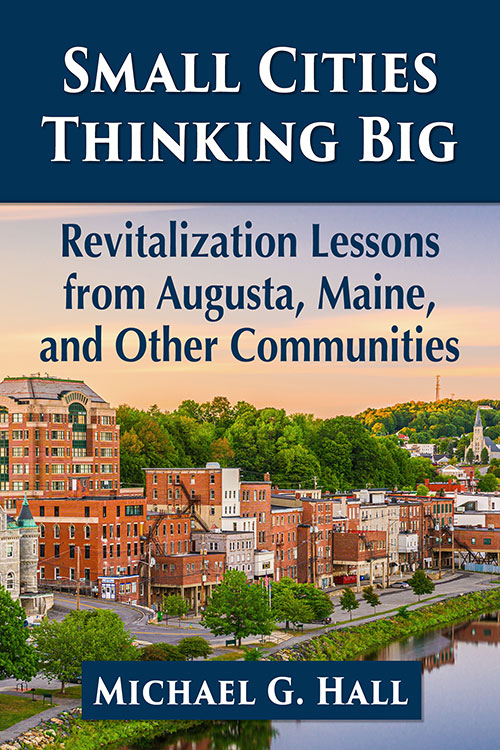Small Cities Thinking Big
Revitalization Lessons from Augusta, Maine, and Other Communities
Original price was: $39.95.$19.99Current price is: $19.99.
In stock
About the Book
Many cities with a population of 150,000 or less struggle to compete with their larger neighbors and often have trouble attracting residents and new businesses. This book explores the numerous ways these cities can compete on a larger scale without sacrificing their small-town character. It utilizes experiences from other cities, as well as from the author’s time revitalizing Augusta, Maine (pop. 19,000). Featuring chapters that focus on organizing volunteers, adhering to aesthetics, marketing, urban planning, and more, this book tackles key paths every small city should follow when attempting to redevelop its image.
About the Author(s)
Bibliographic Details
Michael G. Hall
Format: softcover (6 x 9)
Pages: 228
Bibliographic Info: 36 photos, bibliography, index
Copyright Date: 2021
pISBN: 978-1-4766-8559-5
eISBN: 978-1-4766-4354-0
Imprint: McFarland
Table of Contents
Acknowledgments viii
Introduction 1
1. Organizing Your House: The Importance of Organizations and Partnerships 13
2. It’s All About Distinction: Identifying and Placemaking Your Small Town 33
3. Focus on Aesthetics 47
4. Ignore the Haters: Learn to Trust Your Instincts 63
5. It’s the Traffic Count, Stupid 78
6. Marketing Your Small City … the Right Way 94
7. Trickle Down(town) Economics: Why Upper-Floor Development Is Key to Street-Level Retail 112
8. Get a Little Artsy 129
9. Leveraging the Unexpected: A Proactive Approach to Disaster Mitigation 148
10. Avoid the Three Deadly Fallacies of Urban Planning 165
11. Mixing It Up: Celebrating Diversity in America’s Small Cities 183
Conclusion: Not a Moment to Lose 200
Chapter Notes 203
Bibliography 212
Index 219






